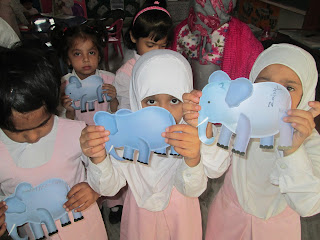Introduction in PYP Visual art:
Visual Arts The visual arts include a broad range of forms, genres, and styles that include the traditional arts of drawing, painting, sculpting, printmaking, architecture, and photography, as well as commercial art, traditional and fine crafts, industrial design, performance art, and electronic and media arts. The visual arts curriculum is intended to help students develop their creativity, as well as the ability to communicate their understanding of the world around them through visual arts. In learning to express themselves in visual ways, students will sharpen their powers of observation, imagination, and invention. In developing the ability to respond to, analyse, and describe works of art, they will learn to interpret art works and to communicate their understanding of the meaning and intentions they see in the works. The development of visual literacy skills and knowledge will therefore prepare students to investigate and understand images, media, and art works, and will equip them to interpret the complex contemporary visual world. The visual arts curriculum is rooted in the experience of art making. Visual arts provide ways of describing, exploring, and responding, and can be used to express ideas, experiences, and feelings. In order to make visual art works, students need to acquire a range of skills and some specific knowledge. It is essential for students to be engaged in meaningful, open-ended art-making activities that enable them to express personal feelings, experiences, and ideas and develop the skills to use art tools, materials, and techniques that are appropriate for the grade. When students become familiar with the possibilities and limitations of a variety of tools, materials, and techniques and can demonstrate control of these resources, they will be expected to apply their knowledge and skills in making artistic choices in their own work. The works of art to which students are exposed should represent various topics, themes, and styles (e.g., representational or realistic, stylized, Impressionist, abstract works) and different historical periods, including contemporary art by living artists, and should also include conceptual and fine art, traditional art, and artefacts. Teachers are expected to use a range of high-quality art reproductions so that students have high-quality materials to observe and learn from. It should be noted that the art works cited in the curriculum are only examples and are not meant to limit teachers’ choices. The works selected for study should include the works of both men and women and should reflect the cultural diversity of Canada and the world, including the contributions of First Nation, Métis, and Inuit artists. Through experiencing a wide variety of art works, students will also learn to understand and appreciate the range and significance of artistic expression. Wherever appropriate, the study of the visual arts should be linked to the other arts disciplines and other subject areas. Fundamental Concepts Dance Elements: body, space, time, energy, and relationship Drama Elements: role/character, relationship, time and place, tension, and focus and emphasis Music Elements: duration, pitch, dynamics and other expressive controls, timbre, texture/harmony, and form Visual Arts Elements: line, shape and form, space, colour, texture, and value Principles: contrast, repetition and rhythm, variety, emphasis, proportion, balance, unity and harmony, and movement 18THE ONTARIO CURRICULUM, PYP The Arts The Visual Arts strand has three overall expectations, one for each of Creating and Presenting; Reflecting, Responding, and Analysing; and Exploring Forms and Cultural Contexts.
Arts Mission
Art instruction in the school town of Munster will provide differentiated learning opportunities that challenge student’s individual creativity. Art education contributes to:
• Individuality and freedom of expression.
• Enrichment and quality of life.
• Appreciation and respect for diversified cultures.
• The interest in art skills.
• Learning about future careers related to the arts.
• Experiencing art like an artist.
By- Dr. Farida Naim
PYP Visual Art Educator
Student Work:
Student makes animals and birds art form in handprint.



Student makes animals and birds art form in handprint.



Life size paper me arts activity:
Collage Art:
Basic shapes drawing primary colors activity.
Hand print activity to make five little firefighter.
Weather wheel art activity...........
Grade KG-I
3D Paper craft (Cube Craft)
3D Paper craft of elephant
Self-portrait drawing and coloring activity according to body part U.O.I
Stone art activity based on natural resources.....
Grade -II
The stencil art.























































No comments:
Post a Comment